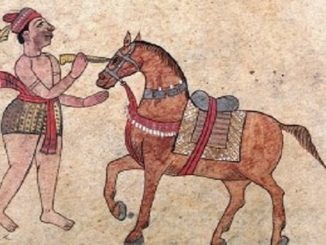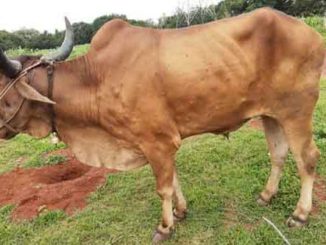The function of the whole digestive system is the digestion and absorption of the nutrients, neutralization of the toxins and elimination of the wastes and unwanted products. Clinical signs such as vomiting, diarrhoea and weight loss are the main problem for the majority of gastrointestinal diseases in dogs. Nutritional management plays important role in the treatment and, it depends on the underlying condition, it can be more important than pharmacological intervention. The presence of food in the gastrointestinal tract (GIT) provides a variety of trophic stimuli, such as nutrient supply to enterocytes and colonocytes, increased mesenteric blood flow, stimulus to release digestive hormones and enterohormones which influence the replication and differentiation of intestinal cells, immunoglobins like IgA secretion, maintenance of the gut-associated lymphoid tissue . On the other hand, some factors related to the diet can cause severe adverse reactions as a systemic inflammatory response, osmotic diarrhoea and a reduced gastrointestinal transit time.
Digestive tract is the natural pathway through which food is ingested and digested. Direct disorders of involved organs occur in GI diseases which cause loss of the ability of nutrient absorption, and consequent malnutrition that can lead to some systemic complications.
Gastroenteritis
Vomiting and diarrhoea are main symptoms of gastroenteritis in dogs. signs such as pain around their abdomen, lack of appetite, weakness and depression. Some rest for the digestive tract is the treatment of acute gastrointestinal disorders often involves. Food is withdrawn for a 24 – 72 hours period to reduce the intestinal osmotic load, and also reduce the intestinal substrate for bacterial fermentation. For animals with gastroenteritis enteral nutritional support in anorexic patients is beneficial. Dogs infected with Parvovirus when fed by nasoesophageal showed weight gain, and reduced mortality, even when vomiting and diarrhea were present, when compared to dogs fasted until these clinical signs are no longer present. Enteral nutrition should be started as early as possible, restricting the microenteral nutrition to the period of transition between anorexia and the enteral nutritional support.
pancreatitis and pancreatic insufficiency
In patients with pancreatitis nutritional support should be started as early as possible. If the animal has been anorexic for less than 5 days (most dogs with edematous pancreatitis), parenteral nutrition therapy can be used. Total parenteral nutrition can be used if the animal is anorectic for more than 5 days and the option of a jejunostomy tube is not possible,. Pancreatitis in cats has a lower incidence of vomiting, and in this case enteral nutrition should be started as early as possible (maximum of 3 to 4 days), especially if the cat is obese and there is a risk of lipidosis.
Easily digestible diet with low fiber concentrations is required in patients with exocrine pancreatic insufficiency. Micronutrients supplementation (cobalamin, tocopherol) and enzyme administration are also necessary. Non-enteric coated powder enzyme supplements seemed to work best, probably at individually adjusted dosages. A high fat diet can be necessary to restore adequate body condition.
Chronic Diarrhoea
Chronic diarrhea can be due to many reasons such as food intolerance, stress-related colitis, C. perfringens, fiber-responsive colitis, inflammatory bowel disease, large intestine neoplasias, etc. The dietary management varies according to the underlying disease. A moderate level of fiber and fat, divided into small portions during the day should be given in diet of animal. A diet with low fat content and easily digested low antigenicity ingredients should be given. Many patients with chronic colitis respond to hypoallergenic diets. Non-soluble fiber should be used, as cooked string beans, wheat middlings, oat middlings or cellulose. When they are well tolerated, these diets have a regulatory effect on peristalsis and transit time. Soluble fibers, on the other hand, have positive effects on the quality of faeces because they bind water, as cooked carrots, psyllium or ispaghula . Fiber fermentation in the large intestine may lead to the production of short chain fatty acids (acetic, propionic and butyric), reducing the intestinal pH and altering the composition and metabolic activity of the eubiotics. The butyric acid is used by the colonocytes as energy source, and has trophic, antimutagenic and anti inflammatory properties. Probiotics and prebiotics can also be used for this purpose.
Small Intestinal Bacterial Overgrowth
Exocrine pancreatic insufficiency, partial obstruction, , motility disorders, decreased acid production in the stomach, inflammatory bowel disease lead to bacterial overgrowth . Diet must be highly digestible. Gas production, flatulence and diarrhea occur in excessive organic matter. In the more severe cases of malabsorption hypoallergenic diets can be used, including those with hydrolized proteins. Rice should be used as the main source of carbohydrate. According to animal needs the amount of fiber should be adjusted –starting with a low level (<2% crude fiber or 6% of dietary fiber). To increase the energy density of the diet fat can be used, but the amount has to be adjusted according to the patient’s response. Fat can be converted into hydroxylated fatty acids if it is not absorbed that may cause hypersecretion and the diarrhea becomes more severe.
Food Intolerance or Hypersensitivity
Sometimes, the usual diet becomes the main cause of the gastrointestinal disorder, whether due to a food allergy or a non-immune intolerance. The diet modification becomes the curative and the primary treatment of the disease in these situations. In chronic cases, however, it is more difficult to detect the food involved in the disease. Inflammatory bowel disease, can also be manifestations of food allergies. As an attempt to eliminate antigens and intolerances in this situation, a “hypoallergenic” diet can be used or diets with new ingredients that were never given before to the animal.
Adjuvant Diet Therapy
The diet is not the cause of gastrointestinal disease. However, due to the digestion and absorption compromising and uses of a conventional diet can lead to diarrhea. In such condition, diet modifications do not cure the disease, but reduces the clinical manifestations, acting as an adjuvant to drug therapy.
Digestibility: Damages to intestinal mucosa can reduce the digestion and absorption, so the use of a highly digestible diet is recommended (dry matter digestibility > 87%).
Carbohydrates: Rice is the highest digestible cereal to dogs and cooked rice is an excellent option for homemade diets. Damages to the mucosa can interfere with the brush border, reducing the production and animals can present intolerance to sugars so they should be avoided. This is also true for lactose, so milk and dairy products should be avoided .
Protein: The diet should have high digestibility (>85%) and biological value. The use of a single protein source can be best option to several gastrointestinal diseases, and it can be effective when true diet sensitivity is present. It also reduces the risk of hypersensitivity development by the sick intestine.
Fat: Reduction of the intestinal surface associated with villi atrophy can result in malabsorption. In cases of bacterial overgrowth in the small intestine, significant fat fermentation may happen. The use of medium chain fatty acids can be an alternative to provide calories to the animals, but their use remain controversial.
Fibers: Soluble fibers gelatinize the digesta, increase hydration of feces and reduce the food digestibility. Non-fermentable and non-soluble fibers can be used in larger amounts, reducing energy digestibility and helping faeces formation. In general, the recommendation is to use fibers with moderate fermentation and solubility, adding the benefit of these two characteristics to the diet. Small intestine diarrhea require the use of low fiber diet (< 2-3% of crude fiber), and in an opposite way for large intestine diarrhoea a high fiber diet (>8-10% of crude fiber) could favor colon functions.








Be the first to comment